They look original and they look cool. Words that as far back as two years ago I would not have imagined I’d write when reviewing KZ earphones. But the KZ ZSX are really different from any other KZ earphones I’ve tried to date, mostly in a good way.
Disclaimer: Linsoul provided this unit to me free of charge. The ZSX retails for $38.
TL;DR: recap
| Pros |
Cons |
| Original design!
Decent build quality Good physicality of bass and mids Good treble detail |
Large shells become uncomfortable after a while
Low-quality, tangle-prone cable Slow, monotonous bass Fatiguing peak in the 8 kHz range |
Rating: 6.7/10
Packaging & Accessories
KZ followed their latest trend in terms of packaging: the ZSX come in their more elaborate box, which is black cardboard with a foam layer that holds the earpieces. In terms of accessories, it’s the same old story: there are the earphones with their detachable cable plus three pairs of silicone eartips.
Design & Comfort
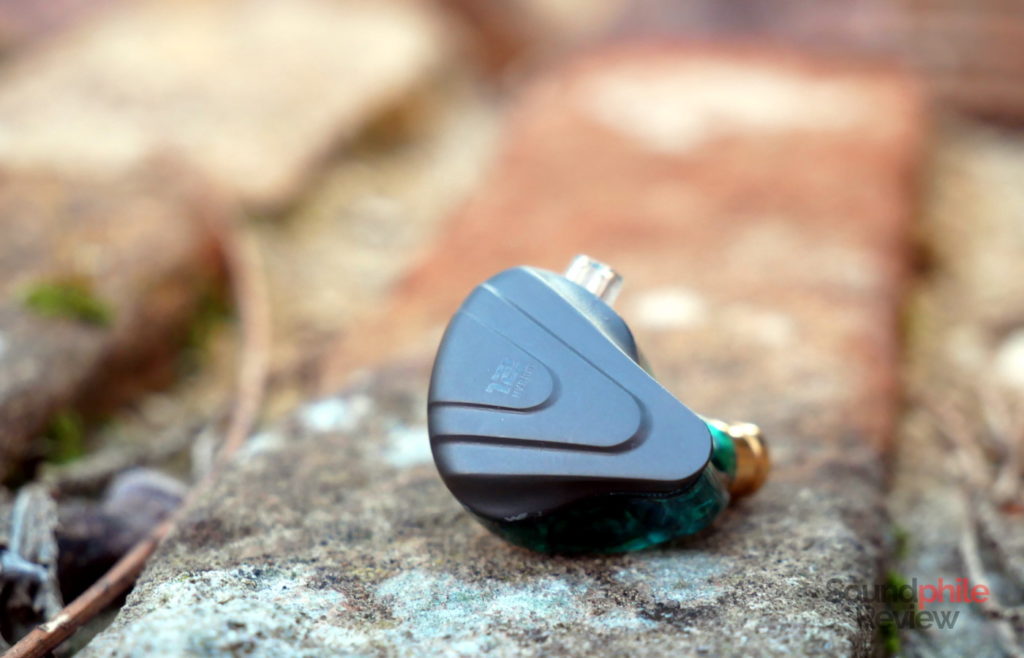
The ZSX are quite unlike any other earphones by KZ: they are more triangular than their previous offerings and they have a unique shape in terms of faceplate and shell. The faceplate is surely what stands out the most: it’s made of three metal triangles of progressively smaller sizes, one on top of the other. It basically looks as if the metal was poured slowly and solidified forming three “waves”. I really like it. There’s also a “12 hybrid” text on it, seemingly printed on the metal – it’s also really tiny, so it doesn’t take away from the generally clean aesthetics of the earphones.

The shell is made of plastic, which in my case is transparent dark green (but it’s also available in purple and black). It shows the innards clearly. The nozzle is made of metal and has a large lip to better grip eartips. The 2-pin connector protrudes from the shell as it is compatible with the QDC standard.

The ZSX are KZ earphones with the usual build quality – which is to say that they are well built, but not the best. The materials always feel a bit cheap, though to date I have had no KZ earphones break on me (though that’s anecdotal, of course).
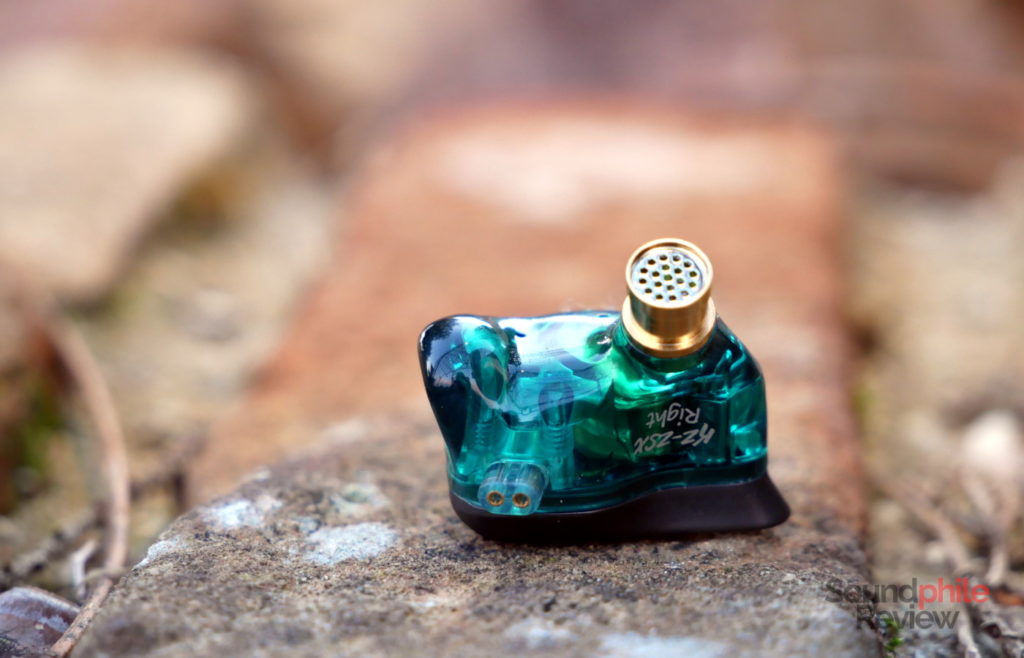
The shell is rather large and despite its shape it causes comfort issues even in relatively short-term listening sessions. After just an hour I would feel discomfort, mainly because of the “wing” on the upper part of the shell. That “wing” in fact pressed on my pinna in a way that makes it annoying and even a bit painful (in the long term) to wear the earphones. You may have a different experience, so keep the subjective nature of comfort in mind when reading this.
I found isolation decent, but in the average of what hybrid earphones such as these offer. They can be worn on public transport, but you’ll have to raise volume a bit to be able to hear the music correctly.
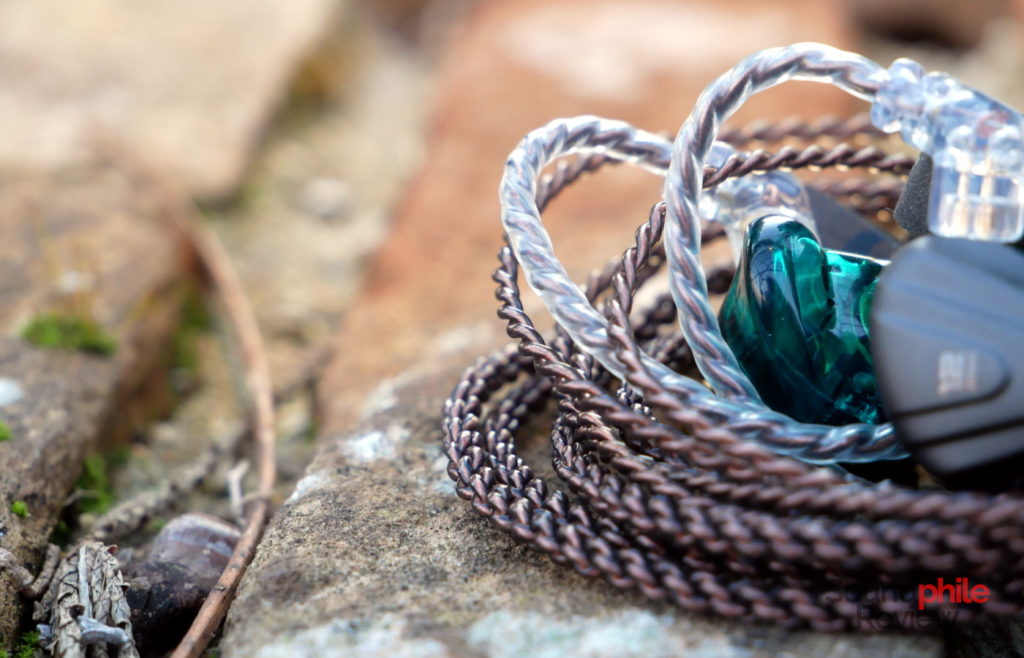
The cable is the usual one by KZ – it’s horribly prone to tangling and I hope KZ will choose better cables in the future. I suggest anyone interested in buying a ZSX to have a look at other earphone cables.
Sound & Specs
I tested the KZ ZSX using a Topping DX7 driving a Drop THX AAA 789 amplifier while I was sitting at the desk and a HiBy R5 while on the move. Source files were actually the same in both situations and were mostly standard-res FLACs (16 bit, 44.1 kHz).
KZ ZSX |
| Frequency response | 7 – 40,000 Hz |
| Impedance | 24 Ω |
| Sensitivity | 111 dB |
KZ seemingly married the “more drivers means better sound” philosophy as they fitted six drivers inside the shells. There are five balanced armatures and one dynamic driver. The placement of the balanced armatures is questionable as it seems like two of them are beside the dynamic driver but with no connection with the nozzle, so I don’t understand where the sound can travel to the nozzle and reach the ear. Moreover, it seems like there is a canal in the plastic that leads to… a hole in the shell. Considering the balanced armatures in question reproduce high frequencies, I wonder how they work. Please also note I am not sceptical for no reason: the first version of the ZS5 had balanced armatures that were demonstrated as having no impact on the sound at all due to their position, so maybe this is a similar case.
Were it not for a larger-than-ideal treble presence, the KZ ZSX would be an easy-to-recommend IEM. Anyway, they are probably the best-tuned earphones by KZ to date.
Soundstage on the KZ ZSX has decent width for closed-back earphones in this price range, but no depth; sound appears to be coming from inside one’s head, although it has some lateral extension. Imaging is pretty much decent, thanks to the good positioning of instruments on the scene and to the ability to recreate the impression of sound coming from in front of the listener. Instrument separation is sufficient, but limited: even moderately complex tracks have some mash-up happening.
Bass has decent extension, but poor control. Despite it reaching the lowest depths with appreciable presence, it sounds uniform and with little texture. Control is in fact limited and the driver tends to not be able to convey much detail, which results in bass being perceived as monotonous (as in “a single tone”). It is more present than ideal neutrality would dictate, but this emphasis is limited and leads to a relatively warm signature with the most presence in the mid-bass region. On the positive side, there is decent physical impact.
Midrange is the neglected child here, without the presence of bass nor the detail of treble. It suffers from the lack of presence of the lower area while also having some coherence issues (possibly due to the large amount of different balanced armatures used). Those are clearly heard in Wardruna’s Pertho, where there is a middling of the various instruments with only the ones with a larger presence in the upper area that stand out. It doesn’t sound bad at all, but there is poor control and this is reflected in the little amount of detail and separation achieved. The relative recession of lower midrange compared to the upper ones also makes mids sound hollower. They’re still plenty enjoyable given the right track: with classic rock the ZSX sound really good.
Treble has good extension, but it has a peak around 8 kHz that is often piercing and very fatiguing. This peak is so fatiguing to me that I have to lower the volume considerably before I feel comfortable listening to the ZSX, but that may well be my very own sensibility towards treble at play so take it with a double pinch of salt. I find that reducing the 8 kHz mark by a couple of decibels using an equaliser makes the sound much better. That’s not only because it reduces the fatiguing peak, but because it makes treble more balanced and less tinny. My impression when listening to the ZSX is that treble is all shifted towards the higher frequencies, so there is a lack of presence in the lower area that makes it “lighter” as a whole but then leaves it without body and coherence. There is a good amount of detail, but it is actually hindered by the aforementioned lack of presence in the lower section.
KZ ZSX Comparisons
Here are a few selected comparisons:
- KZ ZSX vs Shozy Form 1.1: the Form 1.1 are not too distant from the ZSX, yet they are fundamentally different. Their bass is in the same range of emphasis of the ZSX’s, with better control and better extension. Midrange is much less emphasised on the upper area, being almost muted in comparison; in general, it’s more recessed than on the ZSX. Treble is less emphasised and more balanced and coherent on the Shozy, which also offers slightly more detail. Speaking of detail, the Form 1.1 is slightly better than the ZSX. Soundstage is wider and on the Shozy, but the ZSX have better instrument separation.
- KZ ZSX vs KZ AS10: the AS10 are – again – in many ways similar to the ZSX. Bass is a bit less emphasised, but more controlled and faster; being produced by a balanced armature it’s also much less physical and it’s also less extended. Midrange is a bit warmer on the AS10, which have the same emphasis on the upper area as the ZSX though; it’s better separated and detailed, anyway, so it comes out as clearer. Treble is less extended on the AS10, but it also has less peaks – it just has one in the lower area.
Final Thoughts
“Too good to be true” is what comes to my mind when I think of KZ, but in a negative sense: their products are often not really great if you don’t look at them in the right perspective. But the ZSX are different. In their stock tuning they have some issues, but using some slight EQ they can be rather good. The usual question that arises in this case is: are they any good when compared to competitors beyond their price range? In my opinion there are better alternatives out there, especially from the perspective of technical ability; still, the ZSX are definitely interesting and they are the best earphones KZ has tuned so far. If you can live with their tuning or plan to EQ them, they can be a decent companion to your musical journeys.

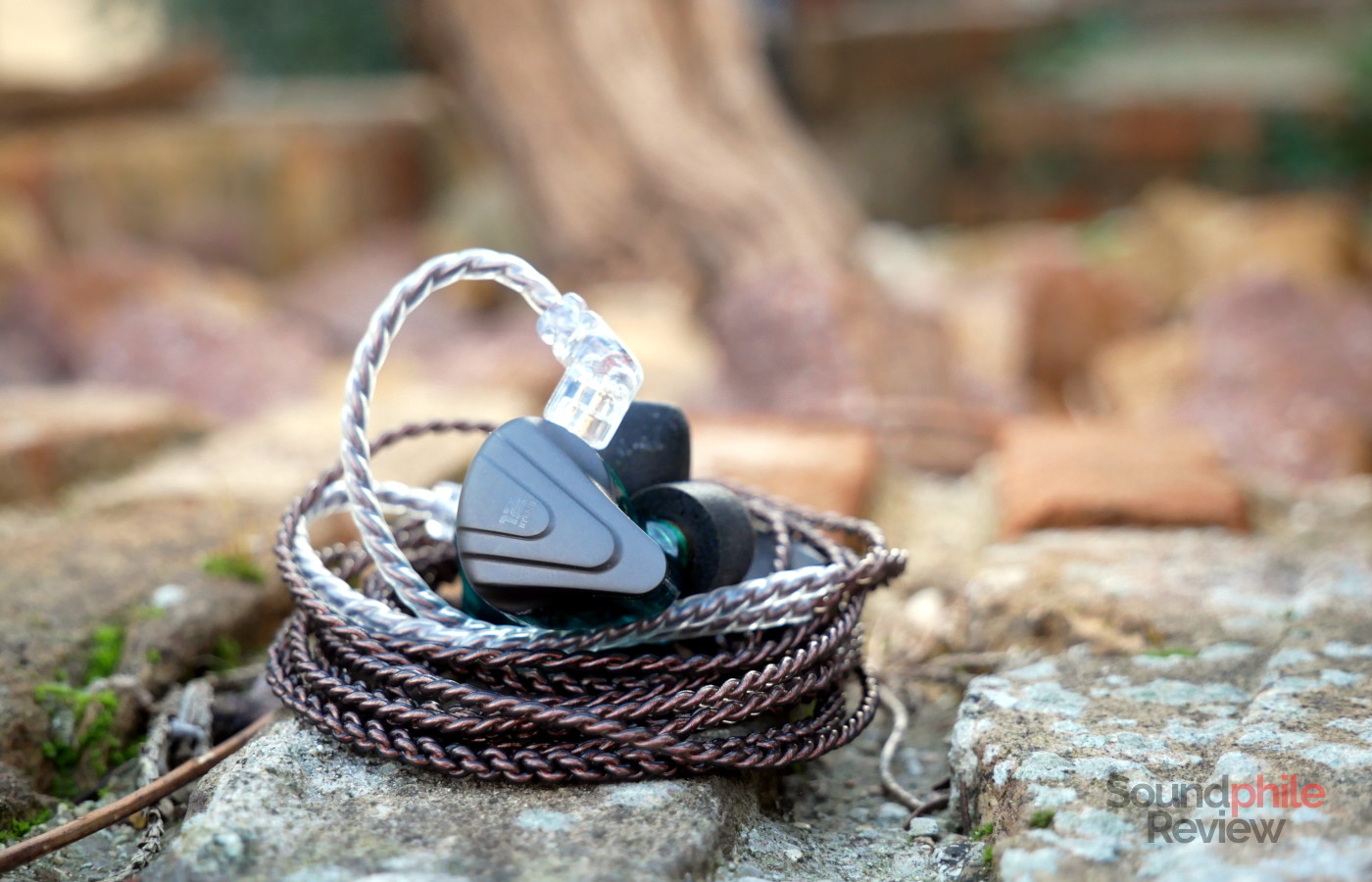
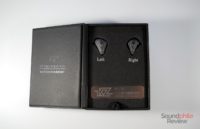



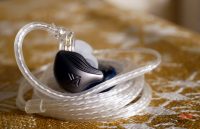


So, in your opinion which one is the better one, zs10 pro or zsx? I’m confused because although you announced ZSX to be the best Kz yet just gave it rating 6.7/10 while Zs10 pro scored a solid 8 in your review
I think the ZS10 Pro is overall better. That’s because the ZSX may have slightly better tuning, but in terms of technical ability the ZS10 Pro are much better. Couple this with the fact that the ZS10 Pro are also much more comfortable to wear and you can see why they have a better overall rating!
what your opinion? wich one has better sound quality? kz zsx vs kz zs10 pro x. I want to listen songs in better overall sound quality. wich one is closer to clarity of sound ?
Hello! I haven’t tried the ZS10 Pro X so I can’t help you with this unfortunately.